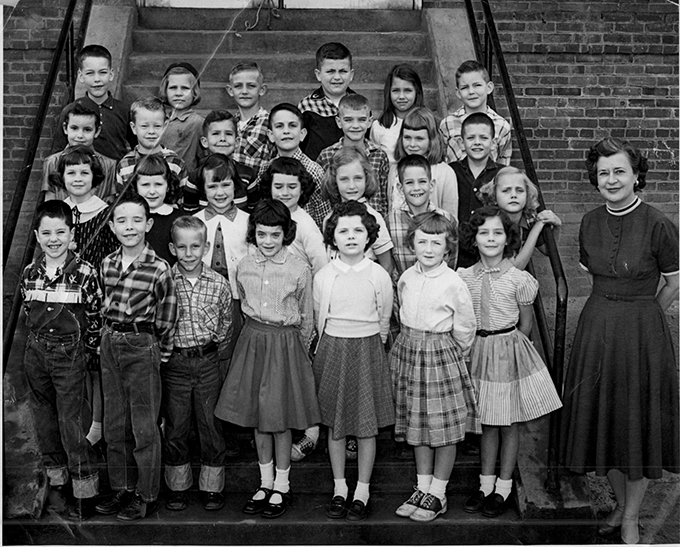
As old as the invention of photography, the class photo has become since the middle of the XIX th century a ritual that, in the digital age, remains essential from kindergarten to the end of high school. Witness of her time, the class photo is a reflection, sometimes in spite of herself, of a political, cultural and social history of the school.
It is “a memory that you will cherish”, says the teacher to her students in the first chapter of Petit Nicolas , presenting the class picture as the future image of a lost world, that of childhood. Sign among others, in literature and cinema, that these clichés are indeed part of our history and our imagination.
The first class photos are made in the middle of the XIX th century, in the most reputable secondary schools that place. With the democratization of the photographic technique, in the last quarter of the XIX th century, these images “memories” are offered to families. Funds raised by school co-ops are used to purchase supplies or participate in school trips.
Between public and private
Director of the National Museum of Education (MUNAÉ), Delphine Campagnolle stresses that “it is a very symbolic object, halfway between the school and the private sphere, because these images are very often preserved, or even transmitted within from a family “. A nostalgic approach that is found on these sites where we hope to find a comrade lost ~ e view from his class photos. This is the case of Copains before , which claims more than 15 million members.
From the end of XIX th century photographers specialize in portrait photos or schools as Pierre Petit (1831-1909). School photographic societies were created as, from 1867, the company David and Vallois and the house Tourte and Petitin since 1882.
The democratization and the multiplication of the photos of class oblige the school institution to frame the modalities of the shooting as from 1927. The last French circular on the school photograph dates from 2003. It tries to avoid the excesses with the writing of a “code of good conduct” for the practice of class photography that respects the rights of all the protagonists of photography, be it the photographer, the school, the minor children with the necessary authorization parental.
The master in the center
In 2017, the beautiful exhibition of the National Museum of Education showed that the class photo was not only a cultural witness but a tool for understanding the history of the school. It allows for example to contradict the legend of the use of the uniform that never existed in the public schools of the XIX th century; it is a specific phenomenon of religious establishments.
With the introduction of the free, compulsory and secular school of Jules Ferry from 1881-1882, the class picture becomes the necessary reflection of a “school order” and a school form, with the values of rigor, seriousness and obedience of the students. The photo of the school class of Buigny les Gamaches in 1906 is illuminating a staging desired by the school.
She presents a master at the center of her class and the blackboard where the quotation from Minister Jules Simon is written: “The people who have the best schools are the first people, if they are not today, they will will be tomorrow “, explicit quote of this desire for revenge after the defeat of the Franco-Prussian War of 1870-1871.
More natural
In the middle of the XX th century, thanks to technical progress, including photo editor technology, the speed of break time and willingness as the institution, the photo is moving towards more “natural.” The faces are more smiling, whether they are students or teachers. However, does the class photo provide an illustration of the transformation or immobility of the “school universe”?
Because this vision of the photo of the class evolved little until the mid-1960s. Is this the proof of a society where the status quo prevails? Or does the immutable ritual reflect the permanence of this republican school? But since the 1970s, a “relaxation of the norm” is perceptible by the positioning of students, their dress, the teacher’s place in the photo but also the mix, late but strong sign of the evolution of the school.
A nostalgic symbol of childhood, the class picture evolves slowly. Is it not a sign of a school institution which, while fundamentally modernizing, remains on the same school form?
Author Bio: Sylvain Wagnon is Professor of Universities in Educational Sciences, Faculty of Education at the University of Montpellier